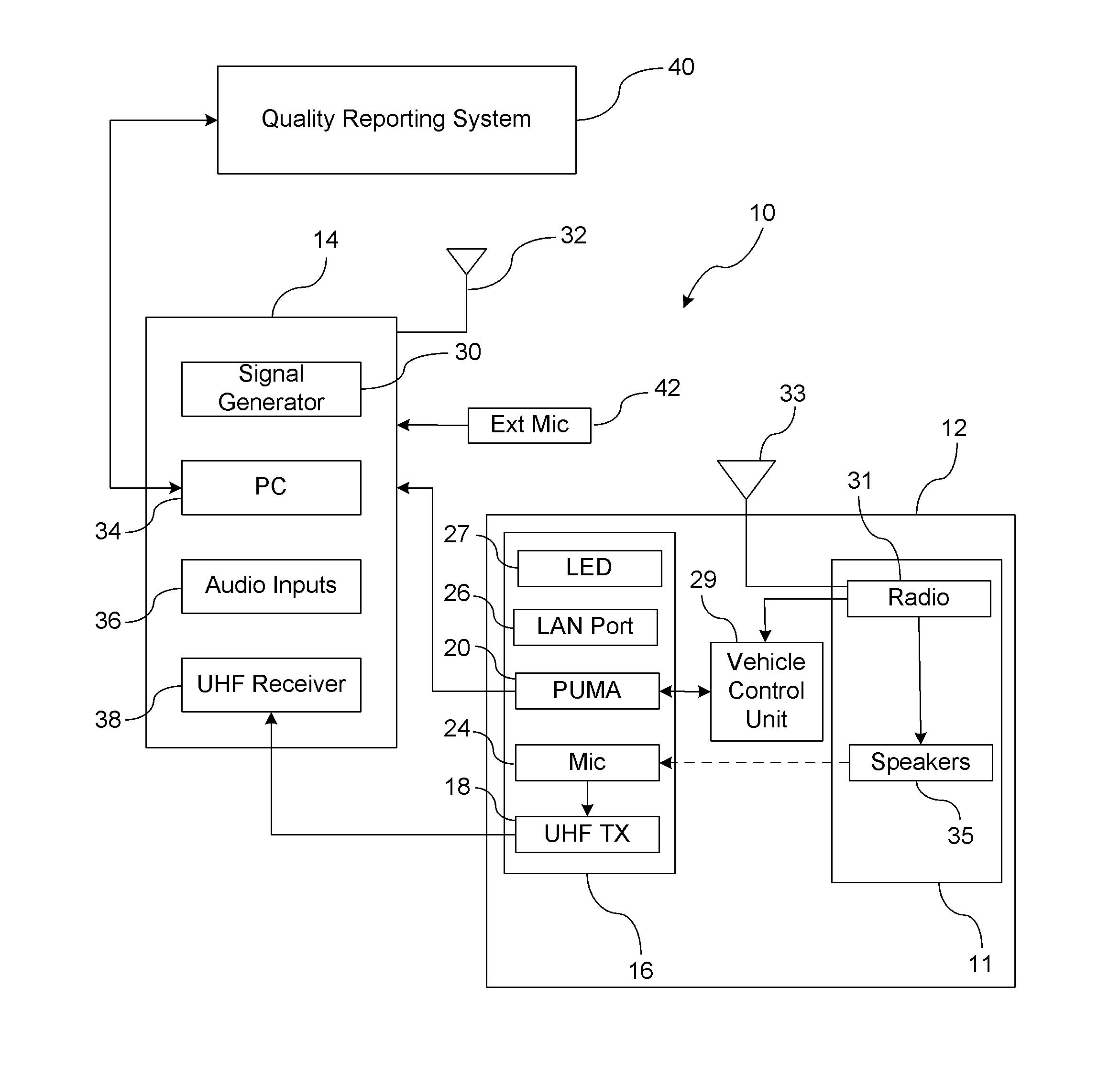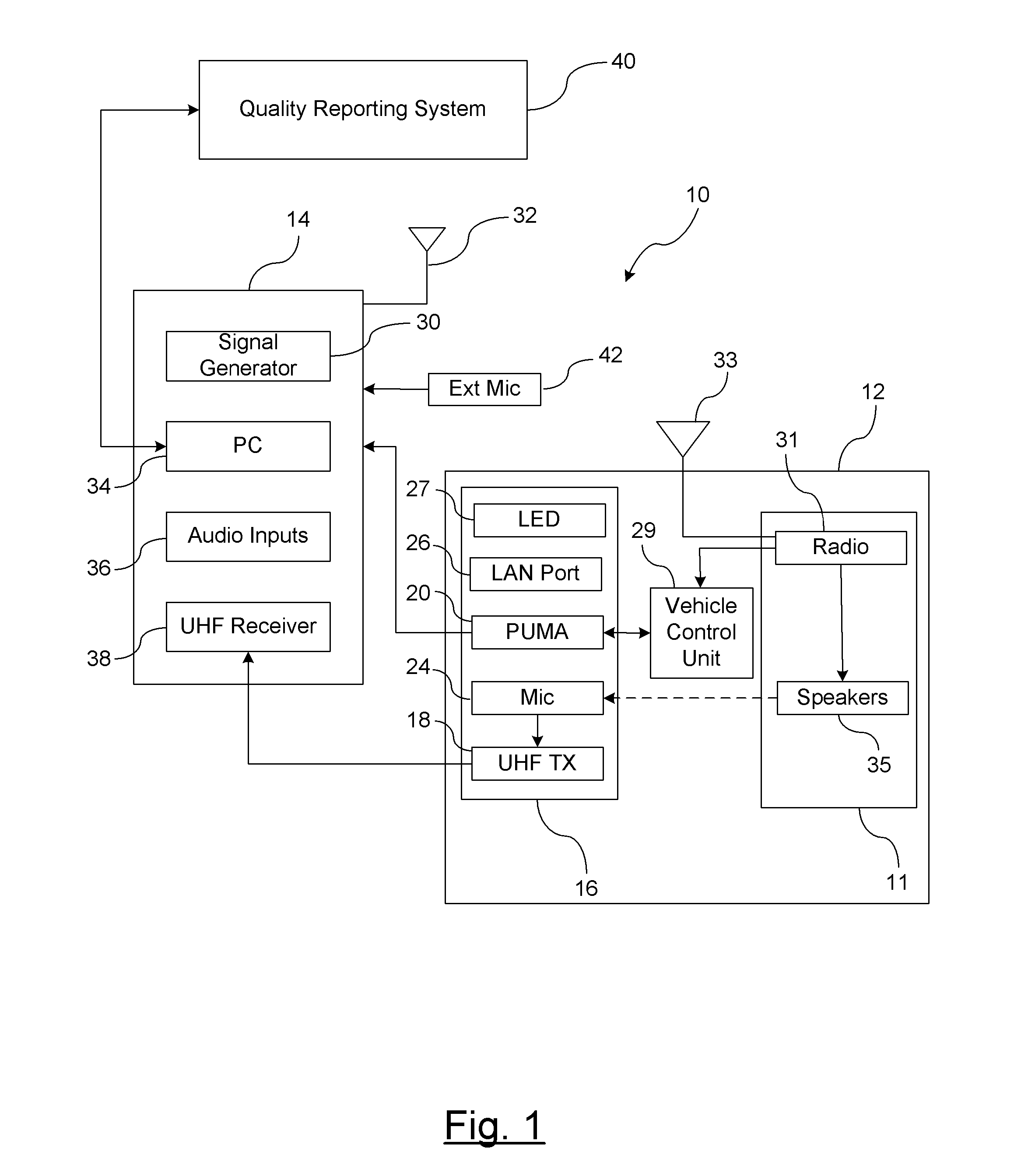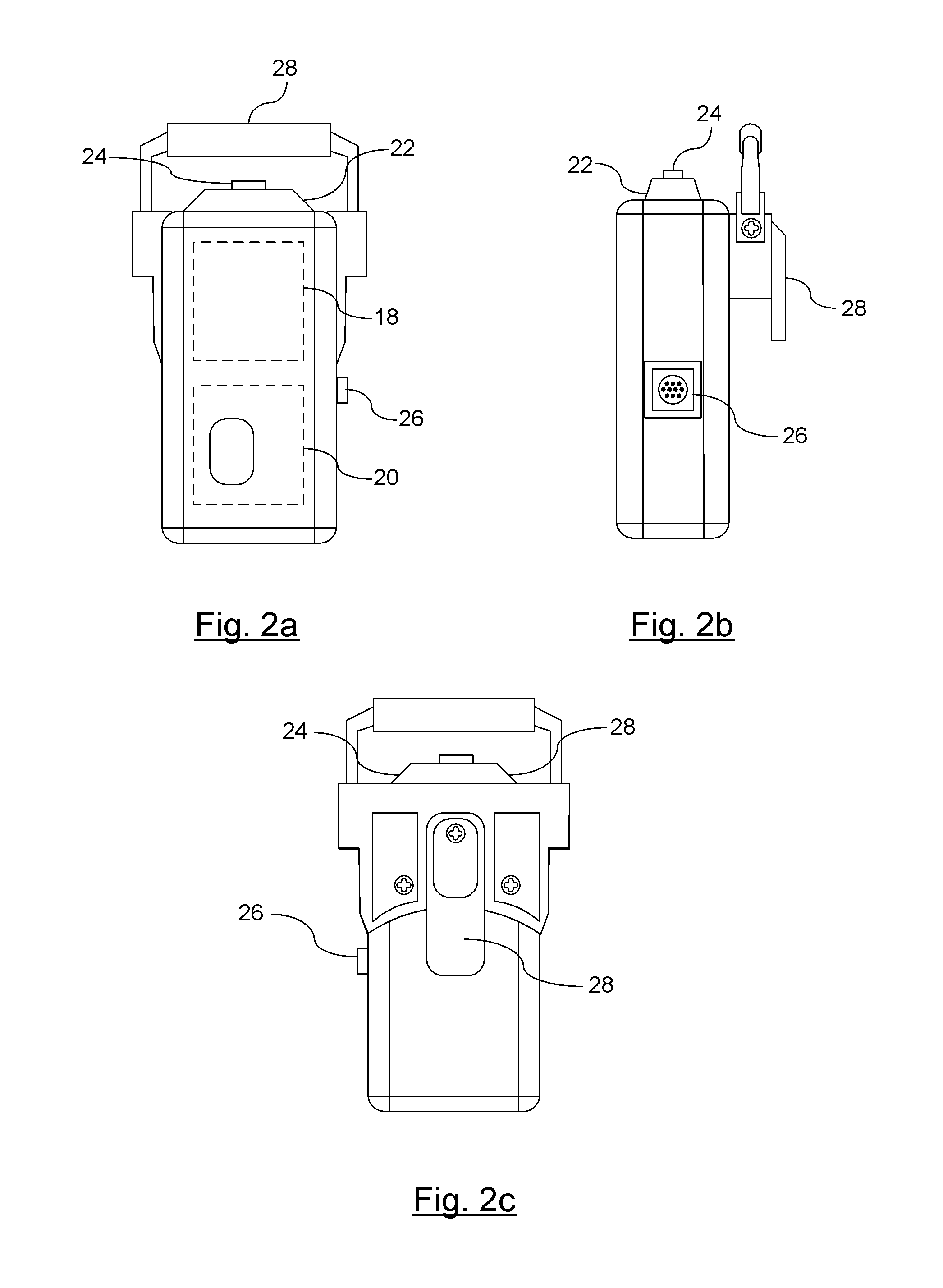Vehicular squeak and rattle detection
- Summary
- Abstract
- Description
- Claims
- Application Information
AI Technical Summary
Benefits of technology
Problems solved by technology
Method used
Image
Examples
Embodiment Construction
[0015]There is shown in FIG. 1, an infotainment checking system (ICS) 10 for objectively testing vehicles for buzz, squeaks, and rattles (BSR) and other noises by interfacing with the audio system 11 of the vehicle. The ICS 10 can be used to obtain objective noise and vibration measurements of every vehicle produced on a vehicle production line in order to characterize BSR noise that could be generated in the interior of a vehicle 12 during normal use by a consumer as a result of defective or improperly installed parts such as speakers or interior trim panels. The term defective installed parts may include, but is not limited to, a defective part itself, an improperly installed part that is a result of operator error, a defect in a part which inhibits installation, a defect of a fastener or improperly installed fastener that inhibits installation, an improper coupling of two or more parts, improper coupling of an electrical connection to a part.
[0016]The ICS 10 includes a portable t...
PUM
 Login to view more
Login to view more Abstract
Description
Claims
Application Information
 Login to view more
Login to view more - R&D Engineer
- R&D Manager
- IP Professional
- Industry Leading Data Capabilities
- Powerful AI technology
- Patent DNA Extraction
Browse by: Latest US Patents, China's latest patents, Technical Efficacy Thesaurus, Application Domain, Technology Topic.
© 2024 PatSnap. All rights reserved.Legal|Privacy policy|Modern Slavery Act Transparency Statement|Sitemap



